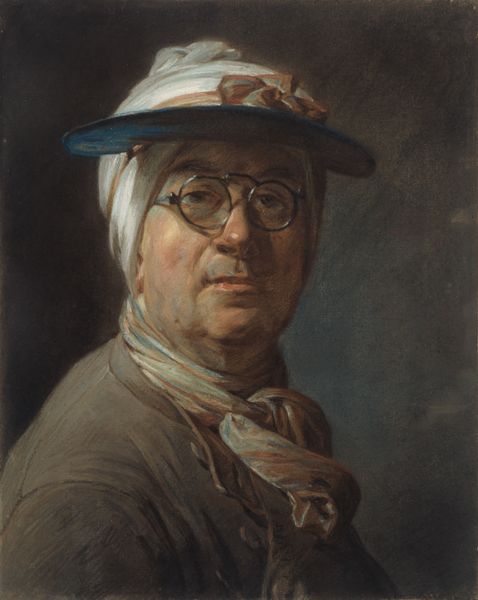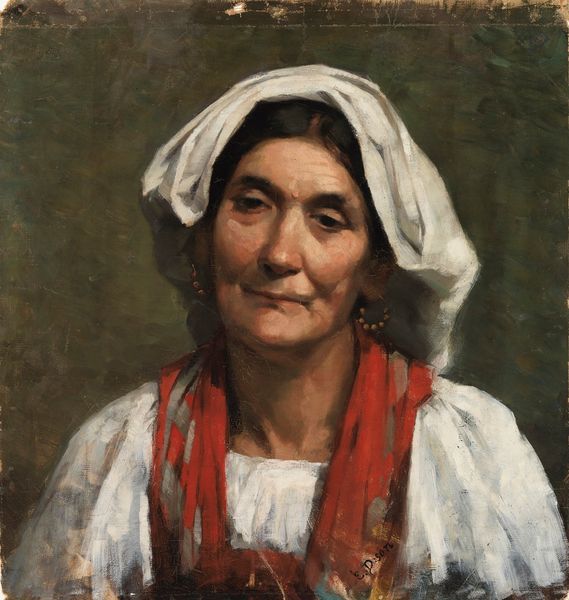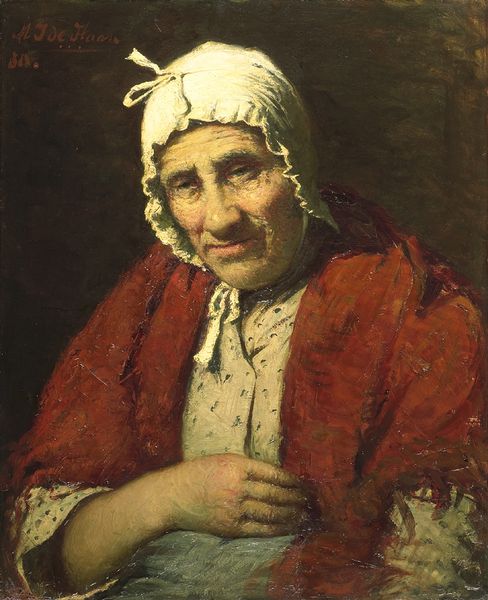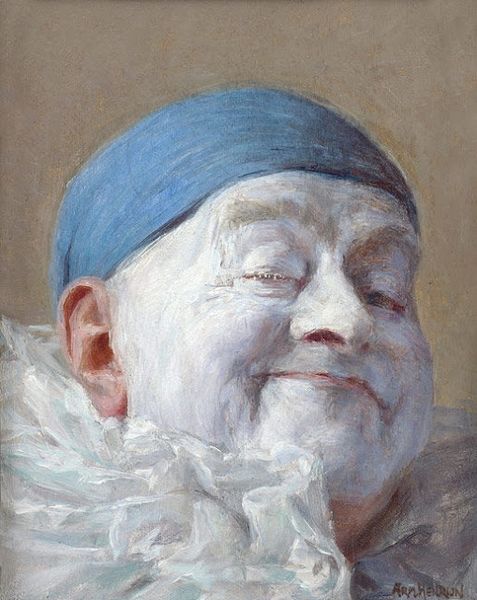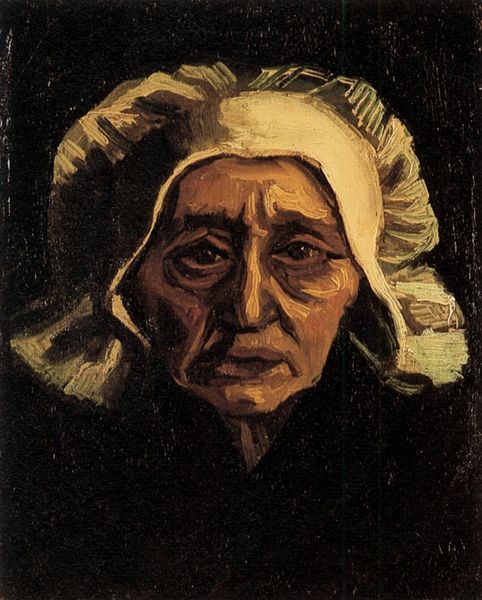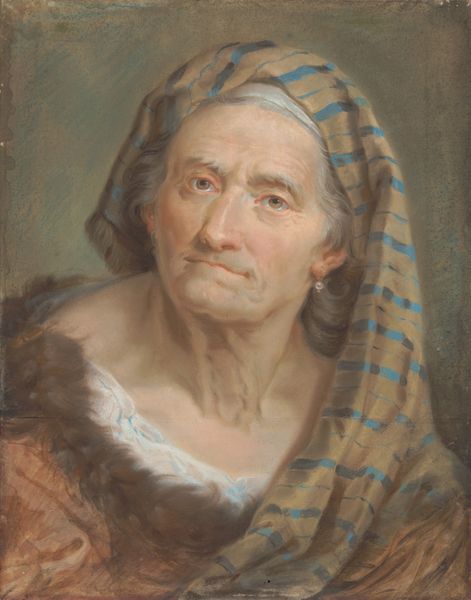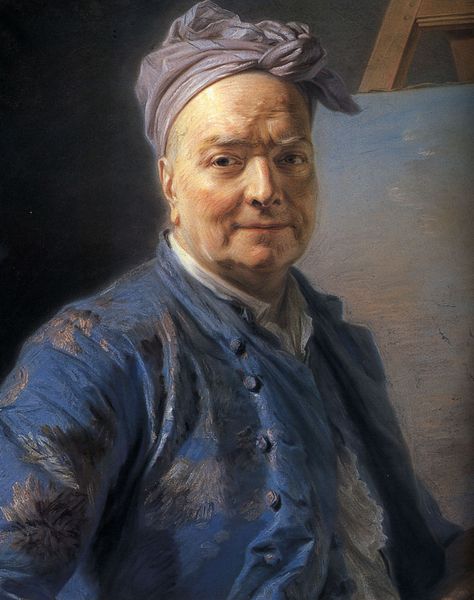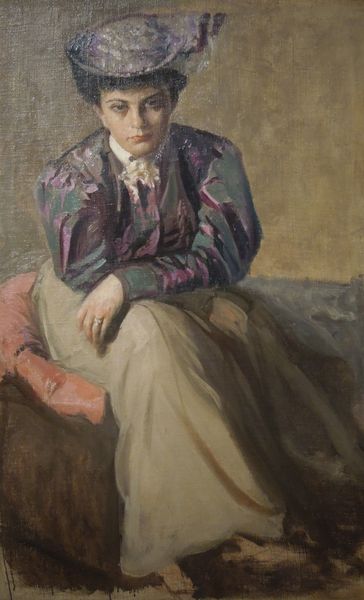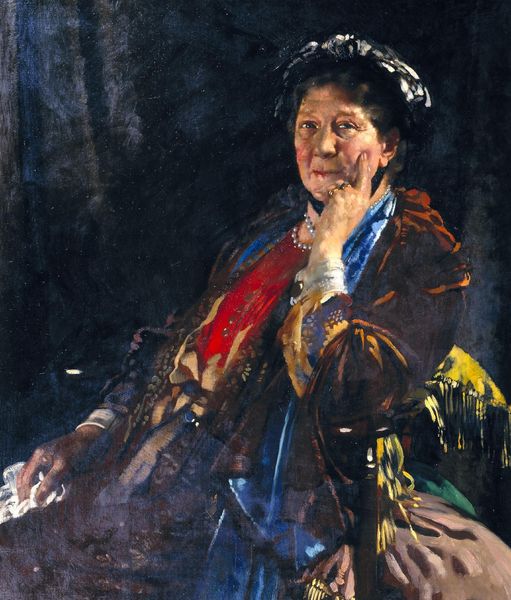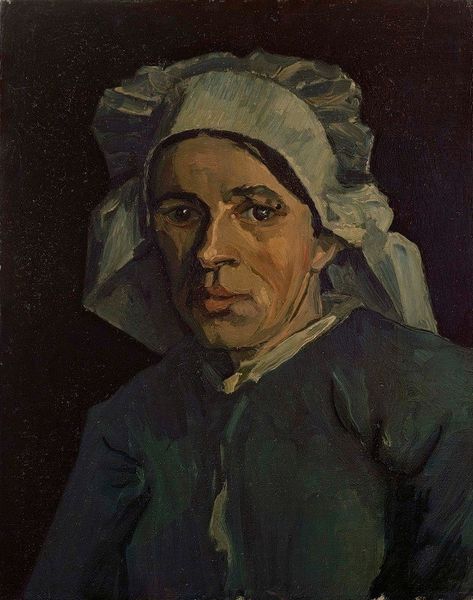
Dimensions: 46 x 38 cm
Copyright: Public domain
Jean-Baptiste-Simeon Chardin created this self-portrait in the 1770s using pastel on paper, a departure from the oil paints that defined his earlier still lifes. Pastel is a medium of pure pigment, lightly bound together. Unlike oil paint, it doesn't allow for blending on the canvas; each stroke of color remains discrete. This gives the image a granular, almost photographic quality, as if it’s been built up from countless tiny particles. You can almost feel the chalky texture of the material. This painstaking method mirrors the character Chardin has presented. There’s no idealization, no flattery. Just an honest, slightly world-weary gaze. It's as though he's showing us the cumulative effect of time, one pastel stroke at a time. Chardin's choice of pastel, a medium often associated with portraiture and the decorative arts, speaks to a broader social context. It was embraced for its immediacy and portability, aligning with the demands of a growing middle class eager to participate in artistic culture. In this regard, it underscores the important place of craft within the larger art world.
Comments
No comments
Be the first to comment and join the conversation on the ultimate creative platform.
